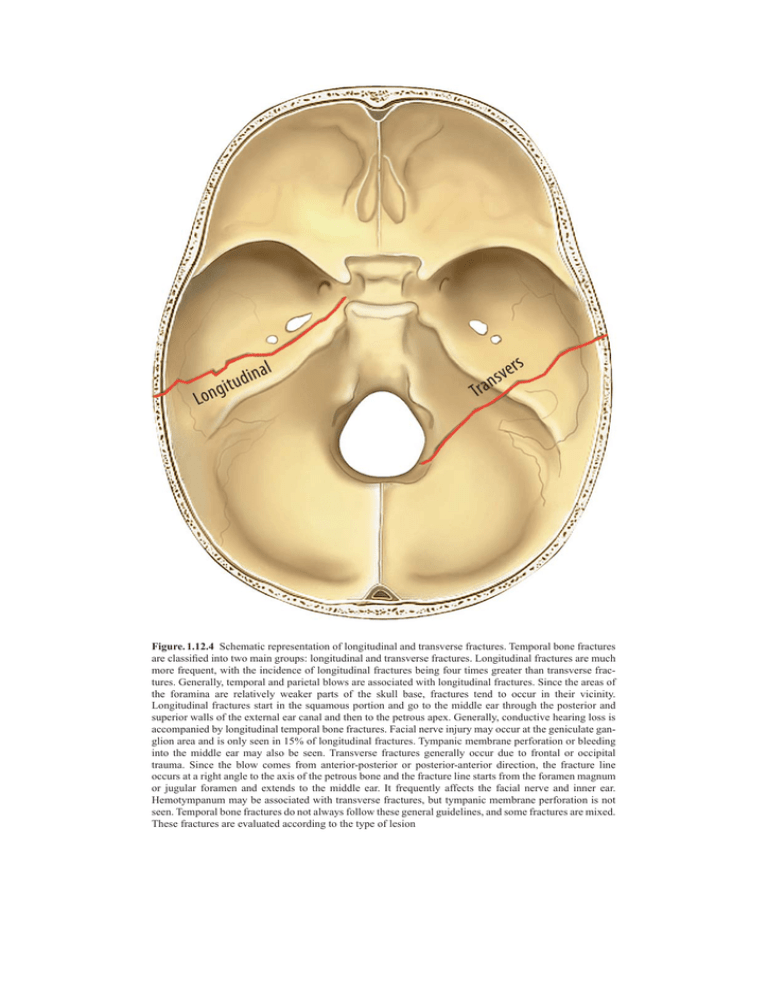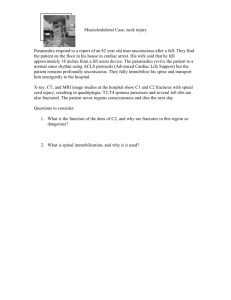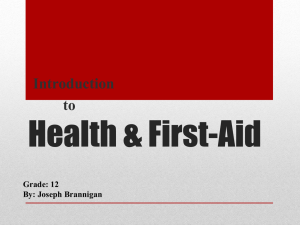Figure. 1.12.4
advertisement

Figure. 1.12.4 Schematic representation of longitudinal and transverse fractures. Temporal bone fractures are classified into two main groups: longitudinal and transverse fractures. Longitudinal fractures are much more frequent, with the incidence of longitudinal fractures being four times greater than transverse fractures. Generally, temporal and parietal blows are associated with longitudinal fractures. Since the areas of the foramina are relatively weaker parts of the skull base, fractures tend to occur in their vicinity. Longitudinal fractures start in the squamous portion and go to the middle ear through the posterior and superior walls of the external ear canal and then to the petrous apex. Generally, conductive hearing loss is accompanied by longitudinal temporal bone fractures. Facial nerve injury may occur at the geniculate ganglion area and is only seen in 15% of longitudinal fractures. Tympanic membrane perforation or bleeding into the middle ear may also be seen. Transverse fractures generally occur due to frontal or occipital trauma. Since the blow comes from anterior-posterior or posterior-anterior direction, the fracture line occurs at a right angle to the axis of the petrous bone and the fracture line starts from the foramen magnum or jugular foramen and extends to the middle ear. It frequently affects the facial nerve and inner ear. Hemotympanum may be associated with transverse fractures, but tympanic membrane perforation is not seen. Temporal bone fractures do not always follow these general guidelines, and some fractures are mixed. These fractures are evaluated according to the type of lesion




